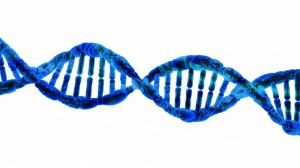
Human Genome Project Will Include Underrepresented Populations around the World in the Original Map of Human DNA
Find out what are the key reasons we need to broaden the sample size of the original map of human DNA created by the Human Genome Project.
At the outset, it wasn’t clear how long it would take to discover and document the entire set of genetic codes that defines us as humans.
But a furious competition soon ensued between the publicly-funded Human Genome Project teams and a private genetics research company, Celera Genomics, led by Craig Ventner.
Not wanting to be outdone, the pace of Human Genome Project research reached a fever pitch, and, by 2003, over 90% of the human genome (DNA) had been documented. A joint paper authored by HGP researchers and Craig Ventner was published in Nature in 2001, and the remaining gaps in the human genome sequence were finally filled in by January 2022.
As Our Ability To Collect, Extract, And Interpret DNA Continues To Grow, We Can Even Extract Human DNA From Collected Air Samples
The Human Genome Project and its rival, Celera Genomics, advanced the frontier of genetic testing tremendously. Sequencing efforts that once cost hundreds of millions of dollars and required very expensive specialized equipment have been superseded by relatively inexpensive DNA sequencing machines, some so small that they can be carried by medical researchers in the field.
The rate of innovation continues apace.
For example, geneticists at the University of Florida have found they can extract and identify ambient traces of DNA (from both humans and wildlife) by analyzing the ambient air. While this is an exciting development for researchers, it poses ethical dilemmas for safeguarding the privacy rights of individuals.
The Human Genome Is The Foundation For Genomic Medicine And Our Understanding Of Human Evolution
Access to the genomic map of human DNA has also transformed our idea of disease management.
For the first time, it’s possible to identify genetic variations that can cause (or contribute to) human diseases, from different types of cancers to auto-immune disorders.
This, in turn, has led to the revolutionary introduction of “personalized genomic medicine,” where samples of patients’ DNA are analyzed, and custom clinical therapies are created to treat individual diseases.
Human DNA analysis has also helped give us exciting new insights into the origins of the human species.
For example, a new paper by researchers at McGill University in Montreal published in Nature proposes a new theory, based on genetic research, that Homo sapiens emerged as new distinct species between 120,000 to 135,000 years ago.
The Human Genome Model We Rely On May Be Unrepresentative Of Diverse Populations Around The World
However, there is a new concern that our foundational understanding of human DNA genetic code may be built on a too narrow foundation.
As you might expect, the original Human Genome Project relied on anonymous human donors to supply the DNA samples for sequencing.
But when you dig into the details, it appears that more than 70% of the DNA samples for the public-sector Human Genome Project came from just one donor, an anonymous male from Buffalo, New York, according to research.
Celera Genomics also relied on a very small sample of five individual human DNA donors.
This lack of diversity is a problem, particularly in light of advances in genomic medicine designed to create unique clinical therapies based on the “standard” human DNA model.
Lack Of Diversity Is Not A New Problem In Clinical Healthcare Research
The lack of diversity in research samples is not a new problem in medical research.
If you have been following some of the ongoing concerns over the lack of diversity in medical research, you might be aware that clinical drug trials have historically had a much higher rate of participation by white men compared to women or people of color or different nationalities.
Critics of this practice point out that this practice can significantly undermine the validity of the drug development and testing process.
In other words, can a new clinical therapy be trusted by women or members of other non-European racial groups if these groups were not represented during the clinical testing stage that evaluates a potential new drug’s efficacy, ideal dosage, and any potential side effects?
Read more...
Julia Solodovnikova
Formaspace
+1 800-251-1505
email us here
Visit us on social media:
Facebook
Twitter
LinkedIn
EIN Presswire does not exercise editorial control over third-party content provided, uploaded, published, or distributed by users of EIN Presswire. We are a distributor, not a publisher, of 3rd party content. Such content may contain the views, opinions, statements, offers, and other material of the respective users, suppliers, participants, or authors.


